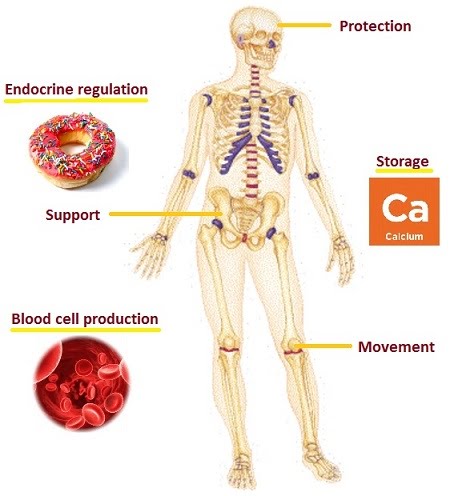The skeleton is made of robust bones containing calcium and bone marrow. Hence, its function is not just the support of the body’s other tissues and organs, but also the production of red blood cells and storage of calcium for the body.

Physical functions of the skeleton include protection of organs such as the skull protecting the soft brain tissue, movement by the limbs and the vertebrae, and support of organs such as the rib cage supporting the lungs. Many of these functions work together with other systems such as muscles and nerves to generate movement and support. For example, skeletal muscles attach to the skeleton and alongside ligaments enable the movement of the skeleton upon muscle contraction.
The intercostal muscles associated with the rib cage help support the lungs and prevent their collapse. The pelvis also works to support the body and organs found above it. Other protection examples include the vertebrae protecting the spinal cord, and the sternum alongside the rib cage and spine protecting the thoracic organs (main blood vessels, heart and…
